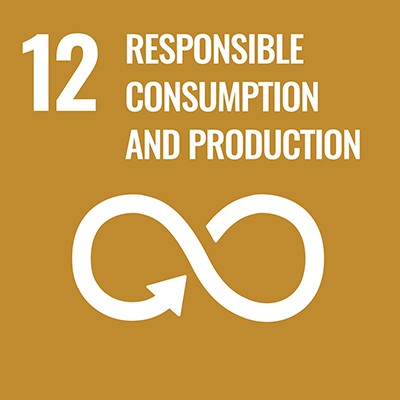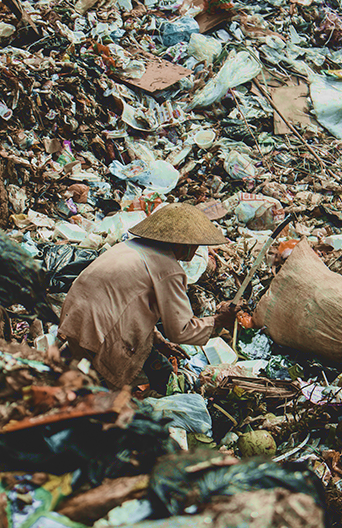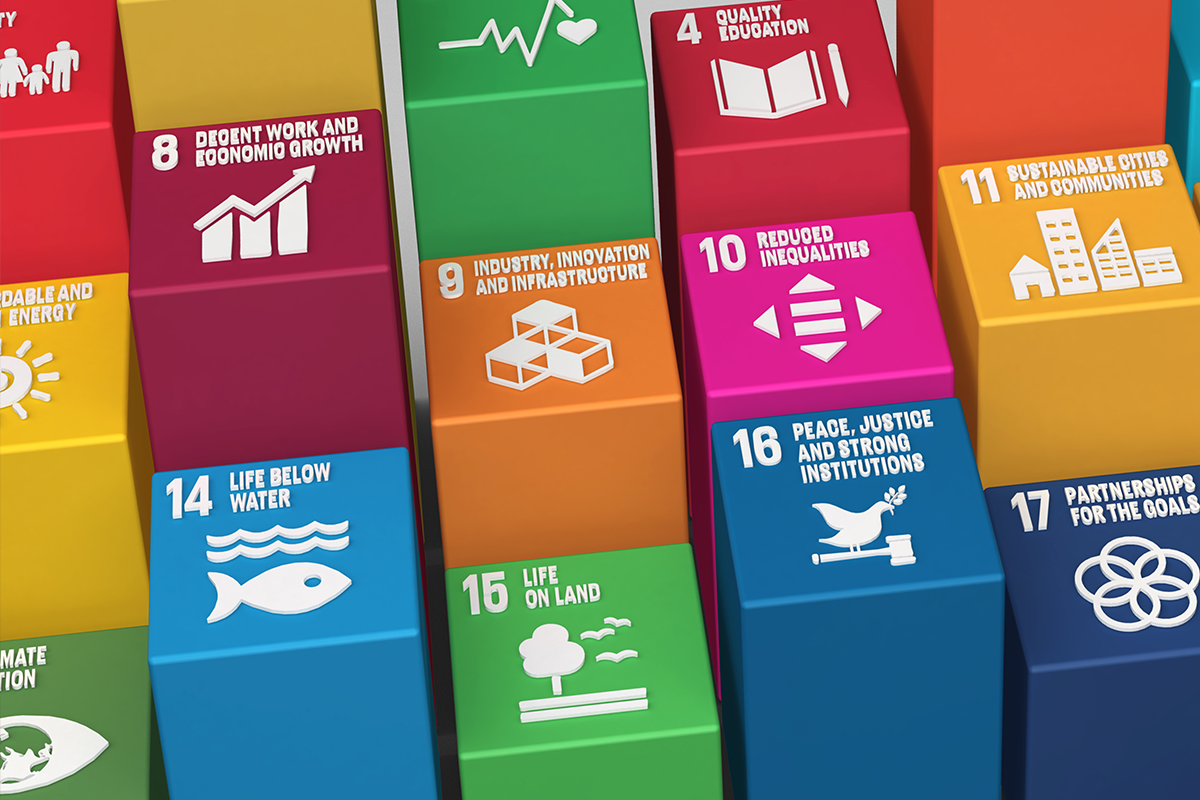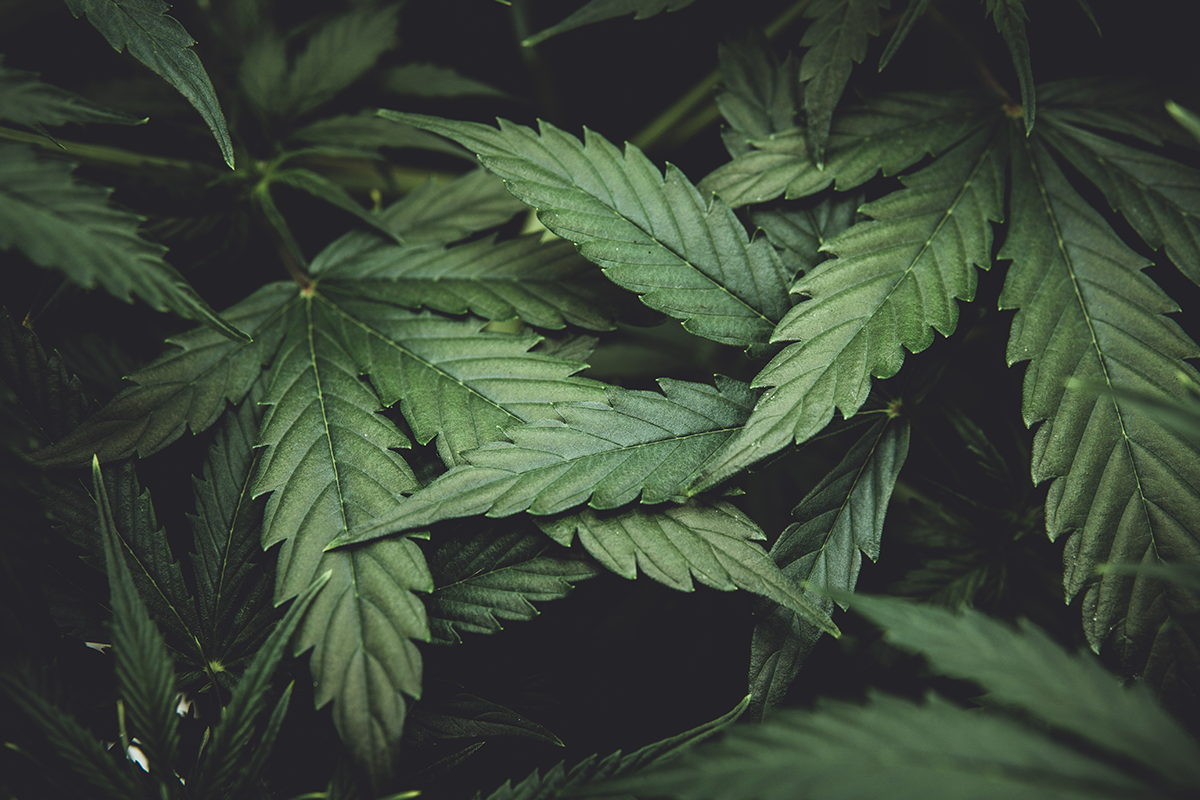RESPONSIBLE CONSUMPTION AND PRODUCTION
Innovation for SDG 12
Ensure sustainable consumption and production patterns.


70%
The global material footprint increased by 70% between 2000 and 2017.
Source: United Nations Department of Economic and Social Affairs, The Sustainable Development Goals Report 2021
Targets and Indicators
The UN framework for measuring progress towards SDG 12.
Target 12.1
Implement the 10-year framework of programs on sustainable consumption and production, all countries taking action, with developed countries taking the lead, taking into account the development and capabilities of developing countries
12.1.1
Number of countries developing, adopting or implementing policy instruments aimed at supporting the shift to sustainable consumption and production
Target 12.2
By 2030, achieve the sustainable management and efficient use of natural resources
12.2.1
Material footprint, material footprint per capita, and material footprint per GDP
12.2.2
Domestic material consumption, domestic material consumption per capita, and domestic material consumption per GDP
Target 12.3
By 2030, halve per capita global food waste at the retail and consumer levels and reduce food losses along production and supply chains, including post-harvest losses
12.3.1
(a) Food loss index and (b) food waste index
Target 12.4
By 2020, achieve the environmentally sound management of chemicals and all wastes throughout their life cycle, in accordance with agreed international frameworks, and significantly reduce their release to air, water and soil in order to minimize their adverse impacts on human health and the environment
12.4.1
Number of parties to international multilateral environmental agreements on hazardous waste, and other chemicals that meet their commitments and obligations in transmitting information as required by each relevant agreement
12.4.2
(a) Hazardous waste generated per capita; and (b) proportion of hazardous waste treated, by type of treatment
Target 12.5
By 2030, substantially reduce waste generation through prevention, reduction, recycling and reuse
12.5.1
National recycling rate, tons of material recycled
Target 12.6
Encourage companies, especially large and transnational companies, to adopt sustainable practices and to integrate sustainability information into their reporting cycle
12.6.1
Number of companies publishing sustainability reports
Target 12.7
Promote public procurement practices that are sustainable, in accordance with national policies and priorities
12.7.1
Degree of sustainable public procurement policies and action plan implementation
Target 12.8
By 2030, ensure that people everywhere have the relevant information and awareness for sustainable development and lifestyles in harmony with nature
12.8.1
Extent to which (i) global citizenship education and (ii) education for sustainable development are mainstreamed in (a) national education policies; (b) curricula; (c) teacher education; and (d) student assessment
Target 12.a
Support developing countries to strengthen their scientific and technological capacity to move towards more sustainable patterns of consumption and production
12.a.1
Installed renewable energy-generating capacity in developing countries (in watts per capita)
Target 12.b
Develop and implement tools to monitor sustainable development impacts for sustainable tourism that creates jobs and promotes local culture and products
12.b.1
Implementation of standard accounting tools to monitor the economic and environmental aspects of tourism sustainability
Target 12.c
Rationalize inefficient fossil-fuel subsidies that encourage wasteful consumption by removing market distortions, in accordance with national circumstances, including by restructuring taxation and phasing out those harmful subsidies, where they exist, to reflect their environmental impacts, taking fully into account the specific needs and conditions of developing countries and minimizing the possible adverse impacts on their development in a manner that protects the poor and the affected communities
12.c.1
Amount of fossil-fuel subsidies (production and consumption) per unit of GDP
Get Started
Inspire action for SDG 12 with the resources below.

Brochure
Open Innovation for Sustainable Development
Extend your innovation efforts to outside talent and expertise to create actionable solutions for your organization’s sustainable development challenges.
Supported Goals

Brochure
Innovation Central
Planbox’s leading platform to manage the full innovation portfolio management lifecycle. Great for building a sustainable culture of innovation that brings big ideas to life over and over again.
Supported Goals
Learn More About the SDGs
Discover the what, why, and how of the Sustainable Development Goals.


